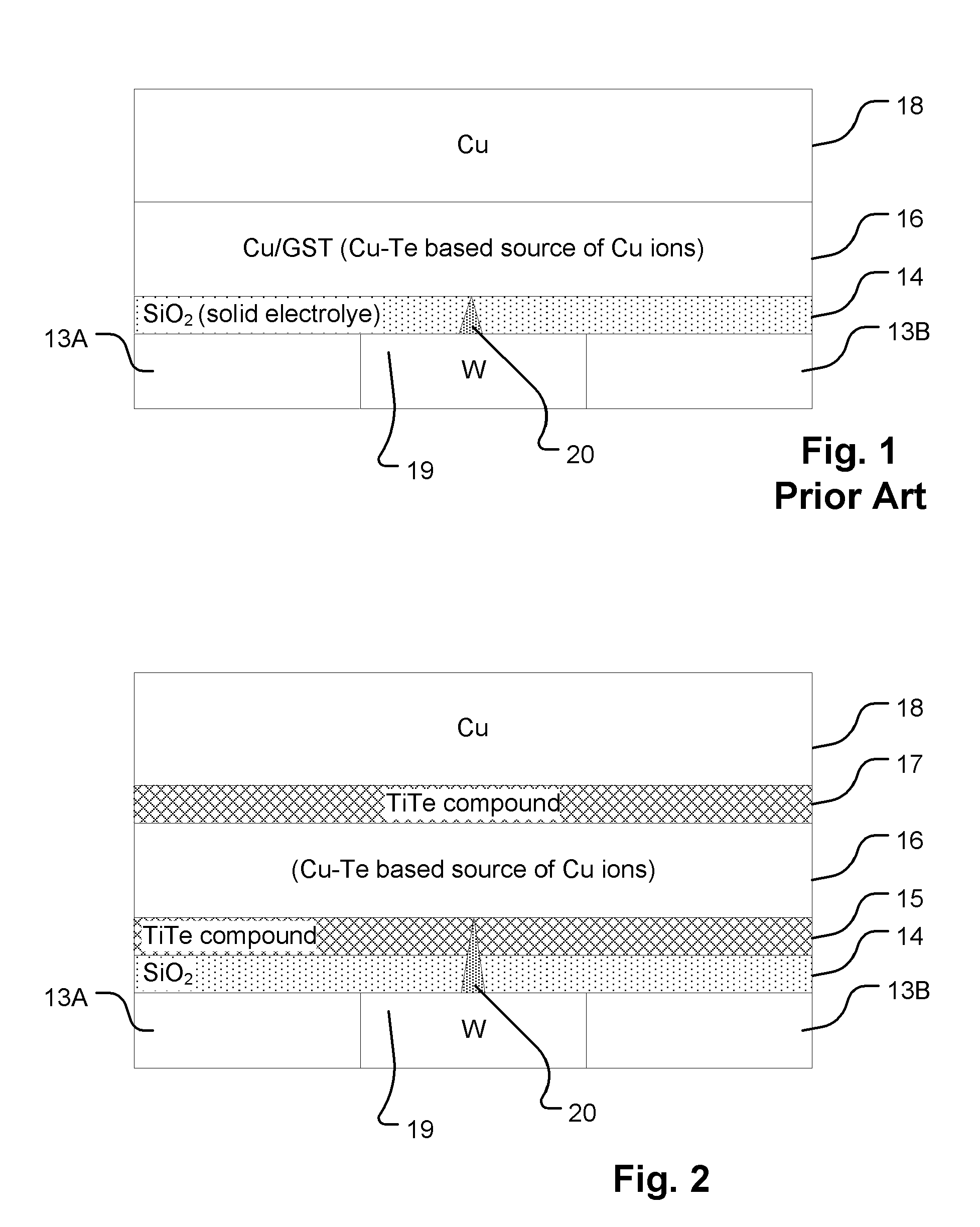Programmable metallization cell with ion buffer layer
a metallization cell and buffer layer technology, applied in the direction of bulk negative resistance effect devices, electrical apparatus, semiconductor devices, etc., can solve the problems of poor data retention and cycling endurance, and achieve the effect of improving the retention of the conducting bridg
- Summary
- Abstract
- Description
- Claims
- Application Information
AI Technical Summary
Benefits of technology
Problems solved by technology
Method used
Image
Examples
Embodiment Construction
A detailed description of embodiments of the present invention is provided with reference to the FIGS. 1-10.
FIG. 1 illustrates a prior art PCM cell, as proposed by Aratani et al., “A Novel Resistance Memory with High Scalability and Nanosecond Switching,” IEEE International Electron Devices Meeting, 2007, 10-12 Dec. 2007, pp. 783-786. The cell in FIG. 1 is formed on an integrated circuit substrate that includes a dielectric layer (13A, 13B) with a tungsten contact 19 extending therethrough to provide a bottom electrode, and memory layer 14 of silicon dioxide, which acts as a solid electrolyte, is formed on the contact 19. An ion-supplying layer 16 of chalcogenide, such as Ge2Se2Te5, overlies the layer 14 of silicon dioxide, and includes a source of metal ions such as copper. In this composition, the copper can react with the tellurium in the chalcogenide to form a Cu—Te compound which readily dissolves to release copper cations. Thus the layer 16 (referred to as an ion activated lay...
PUM
 Login to View More
Login to View More Abstract
Description
Claims
Application Information
 Login to View More
Login to View More - R&D
- Intellectual Property
- Life Sciences
- Materials
- Tech Scout
- Unparalleled Data Quality
- Higher Quality Content
- 60% Fewer Hallucinations
Browse by: Latest US Patents, China's latest patents, Technical Efficacy Thesaurus, Application Domain, Technology Topic, Popular Technical Reports.
© 2025 PatSnap. All rights reserved.Legal|Privacy policy|Modern Slavery Act Transparency Statement|Sitemap|About US| Contact US: help@patsnap.com



